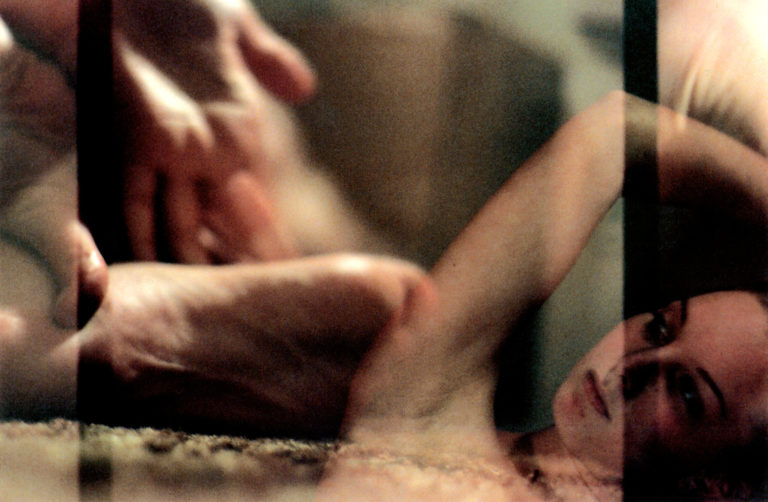
Image by Rebecca Boyd/Flickr, Some Rights Reserved.
The Liturgies We Live By
As Lent moves toward its end — both in the sense of its conclusion and its purpose — I think of this powerful poem by Ariel Dorfman, entitled “Sun Stone”:
They put the prisoner
against the wall.
A soldier ties his hands.
His fingers touch him—strong,
gentle, saying goodbye.
—Forgive me, compañero—
says the voice in a whisper.
The echo of his voice
and of
those fingers on his arm
fills his body with light
I tell you his body fills with light
and he almost does not hear
the sound of the shots.
Its subject matter is the execution by firing squad of a political prisoner, inspired by events during the brutal dictatorship of Augusto Pinochet in the 1970s in Dorfman’s native Chile.
Scottish composer James MacMillan set the poem for choir and organ as the final movement of his work, “Cantos Sagrados.” Musically, the text is framed by — or rather infused throughout with — this phrase from the Credo of the Mass, sung in ethereal tones mostly by the sopranos:
Et incarnatus est de spiritu sancto.
Ex Maria Virgine, et homo factus est.
Crucifixus etiam pro nobis.And by the Holy Spirit was incarnate
of the Virgin Mary, and became man.
For our sake he was crucified.
It is a work of excruciating beauty (cruciāre to torment, cruc-em cross) and the jarring juxtaposition of texts lays bare, obliquely not directly, the drama of Holy Week with its stark contrasts of power and weakness, cruelty and tenderness, unspeakable suffering and astonishing forgiveness. The passio of Jesus in the gospel narratives is the culmination of an obscure life lived in complete embodiment of the shalom of God in the midst of political tyranny and dehumanizing violence, in suffering and death and seeming sure defeat.
During Holy Week, Christians enact this painful drama that we might know more fully the Easter story that counters, subsumes, and transforms it. It is theatrical, disturbing, cathartic, and deeply necessary, for the torture of crucifixion and of firing squads (and of waterboarding, for the record) is, as William Cavanaugh has written “a kind of perverse liturgy [in which] the body of the victim is the ritual site where the state’s power is manifested in its most awesome form.” This anti-liturgy is met in the true liturgy of the Eucharist, where the body of the victim makes possible the creation of a new body which lives by resurrection hope and loves by a power not of its own making.
There are other liturgies we live by in which bodies are scripted into other dramas — like the dramas of fear and exclusion. This has been painfully evident in our presidential politics, in the civic liturgies of campaign rallies and debates. These ritual enactments are chilling in their similarity to what James Alison calls “worship in a violent world” as he describes a Nuremberg rally during the reign of the Third Reich:
“You bring people together and you unite them in worship. You provide regular, rhythmic music … You give them songs to sing. You build them up with a reason for their togetherness, a reason based on a common racial heritage … You keep them waiting and the pressure building up … After the build-up, the Führer appears … they are united in fascination with this extraordinary person, to whom they have handed over the task of being the chief liturgist. And he does not disappoint … the crowd is delirious, outside themselves, united in love and adoration…”
In the violent world in which we currently live (violence in our politics, in our speech, in ourselves), these affinities with the anti-liturgies of fascism have never been more apt. In settings of frenzied excitement for this or that political candidate, fear is stoked and exploited; exclusion — and worse — is the unquestioned stance toward outsiders. These orthodoxies are what unite the devotees in their adoration.
“We will carpet bomb them into oblivion.”
“I’d bring back a hell of a lot worse than waterboarding.”
“If you are a sanctuary city you will lose your federal funding.”
As Lent moves toward its conclusion and its purpose, Christians journey toward resurrection where we will enact the liturgy of hope not fear, of embrace not exclusion. This liturgy is “political” in the truest sense of the word: the gathered community, the polis, enacting a counter-story to the world’s politics.
If our deepest Easter metaphors have mostly to do with butterflies, we will miss this. The Easter proclamation, as Fleming Rutledge has noted, “is not a cheerful message about longer hours of sunshine. It is a world-overturning announcement about the reorientation of our entire existence.”
The Church’s liturgy creates a people who do not flinch from the tortured body of Jesus, but who also know that the marks of violence borne in his broken body are now signs by which we claim resurrection as a counter politics to any violence — state-sponsored, homegrown, or candidate-incited — that denies the dignity of any human body anywhere.
Forgive us, indeed, our compañeros.


Share your reflection